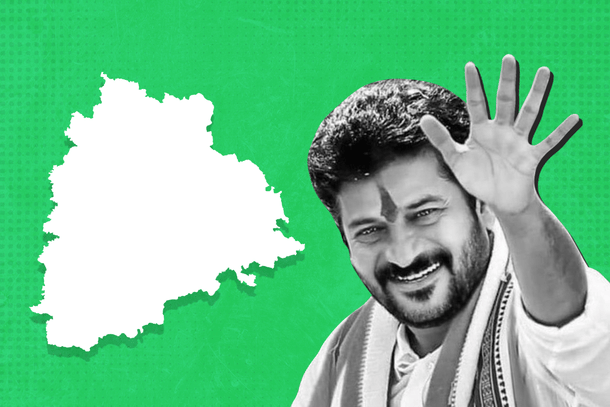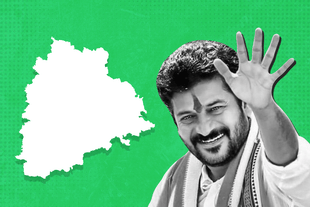Politics
Telangana Election Results Explained: Part-1
Venu Gopal Narayanan
Dec 04, 2023, 02:48 PM | Updated 02:52 PM IST
Save & read from anywhere!
Bookmark stories for easy access on any device or the Swarajya app.


In the run-up to the Telangana assembly elections, this writer made two observations. First, it was doubtful if the Congress could rustle up enough electoral magic to beat the BRS on its own steam; but, secondly, if the Bharatiya Janata Party’s (BJP) vote share touched double digits, “it will lead to a number of unpredictable three-way contests.”
This is exactly what happened. The Congress just about crossed the halfway mark with 39 per cent of the vote, the BRS dropped to 39 seats with 37 per cent, and the BJP announced its arrival in Telangana’s provincial politics by winning 8 seats, coming second in 18, and registering 14 per cent vote share.

A result map below shows that the BRS has largely shrunk to the region around Hyderabad, plus pockets in the north of the state.
The Congress has not only retained its traditional hold in the south and the east, but also made fresh inroads into the west, and parts of the north (a belt with a higher concentration of Muslim votes than the rest of the state).
It has also done very well in reserved seats. The Congress won 14 of 19 Scheduled Caste seats and 9 of 12 seats reserved for Scheduled tribes. Combined, it means that over a third of their wins are from the reserved category.

This is a comedown for the BRS, since it had consolidated its position in the Telangana legislature between 2019 and 2021 through a series of defections, primarily from the Congress. As of June 2023, the BRS held 104 seats in a house of 119, and the Congress was down to a measly five.

Nonetheless, it is difficult to emphatically say that Congress defeated the BRS outright because that is not exactly how the vote swings occurred.
As the table above shows, while the BRS lost 9.5 per cent of the vote share it won in 2018, a majority of these votes went to the BJP, particularly in the north and west of the state. We say this because the results show that the bulk of the BJP’s growth has been in these two areas, at the cost of the BRS. See map below:

On the other hand, the Congress gained more from the ‘Others’. This is a mixture of the remnant Telugu Desam (TDP) vote, the Bahujan Samaj Party (BSP), whatever vote was held on to by YS Sharmila, Andhra Chief Minister YS Jaganmohan Reddy’s sister, and sundry independents.
A clear shift of the Muslim vote from the BRS to the Congress is also seen in the west and the north, which only added to the BRS’ woes, after having bled votes to the BJP. But the Muslims of Hyderabad have continued to vote for their own party, the AIMIM of Asaduddin Owaisi, winning all seven assembly seats where they are in a majority.
This will be quantified in a supplementary piece which analyses votes swings and win margins by each individual seat.
Until then, we can make two points: one, that the BRS is down but not yet out; and, two, that this churn will both have an impact at the national level as the Congress negotiates seats with its dotted coalition, and also make for a fascinating Lok Sabha contest in Telangana next year.
Venu Gopal Narayanan is an independent upstream petroleum consultant who focuses on energy, geopolitics, current affairs and electoral arithmetic. He tweets at @ideorogue.





